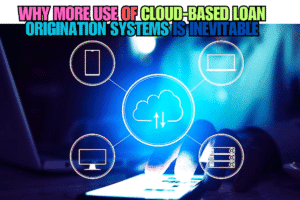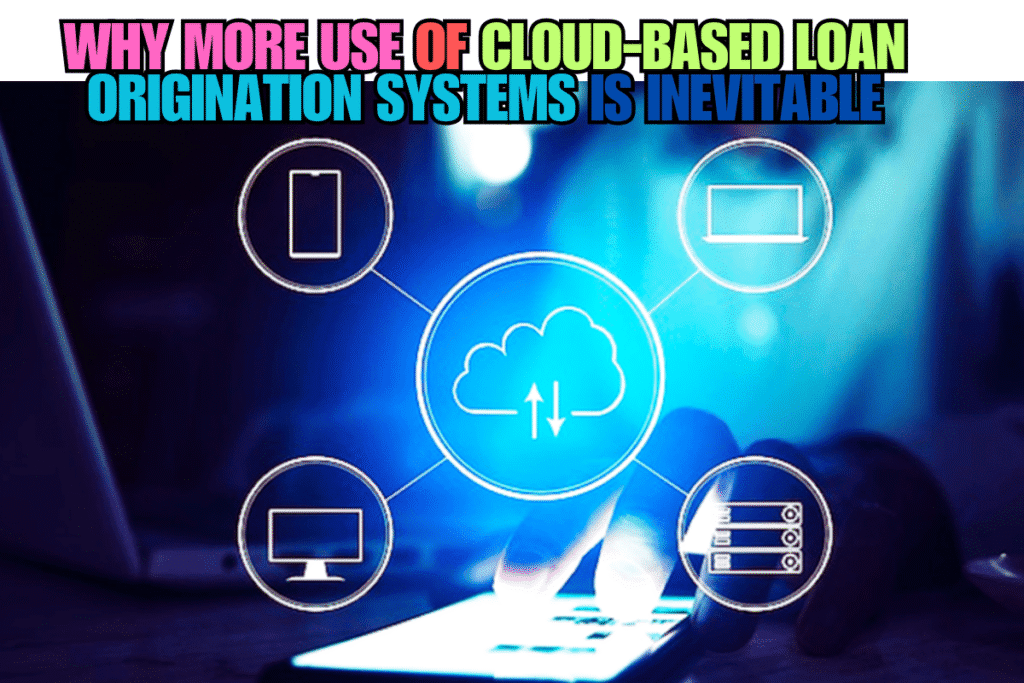The lending landscape is undergoing a seismic shift, moving away from cumbersome, on-premise systems towards the agility and scalability offered by the cloud. The phrase “More Use of Cloud-Based Loan Origination Systems” isn’t just a prediction for 2025; it’s a description of the current trajectory, rapidly accelerating as financial institutions of all sizes recognize the compelling advantages of this technological evolution.
Having witnessed this transition firsthand, from the initial skepticism surrounding data security in the cloud to the now widespread acceptance and enthusiastic adoption, it’s clear that cloud-based Loan Origination Systems (LOS) are no longer a futuristic concept but a foundational element of modern lending. This isn’t just about cost savings; it’s about fundamentally transforming how lenders operate, interact with borrowers, and ultimately, compete in an increasingly digital world. Let’s explore why More Use of Cloud-Based Loan Origination Systems is not just a trend, but an industry imperative.
The Limitations of Legacy: Why On-Premise is Becoming Obsolete
For decades, financial institutions relied on on-premise LOS, often complex, siloed systems requiring significant infrastructure investment and ongoing maintenance. However, in the face of today’s dynamic market, these legacy systems are increasingly revealing their limitations (Challenges and Solutions in Adopting a Loan Origination System – Servosys).
- Inflexibility and Scalability Issues: On-premise systems struggle to adapt to fluctuating loan volumes or the introduction of new products and services. Scaling up often requires significant hardware upgrades and lengthy implementation processes.
- High IT Costs and Maintenance: Maintaining on-premise systems involves substantial investments in hardware, software licenses, IT personnel, and ongoing maintenance, diverting resources from strategic initiatives.
- Limited Accessibility and Collaboration: Data stored on local servers can be difficult to access remotely, hindering collaboration between teams and impacting the ability to serve customers efficiently across multiple channels.
- Slow Updates and Integration Challenges: Implementing software updates and integrating with other systems can be complex, time-consuming, and often disruptive, delaying the adoption of new features and technologies (How Does a Loan Origination System Integrate with Legacy Systems? – Finezza Blog).
Personal Insight: I recall working with a credit union that was heavily reliant on an aging on-premise LOS. Introducing a new loan product line required a major system overhaul, taking months and significant capital expenditure. This starkly contrasted with the agility I’ve seen in institutions leveraging cloud-based solutions, where new products can be rolled out much more rapidly.
The Cloud Advantage: A Paradigm Shift in Loan Origination
The move towards More Use of Cloud-Based Loan Origination Systems is driven by the compelling advantages they offer, addressing the limitations of legacy systems head-on (Benefits of a Cloud-Based Loan Origination System – LendFoundry).
- Enhanced Accessibility and Mobility: Cloud-based LOS can be accessed from anywhere with an internet connection, empowering loan officers and borrowers to interact seamlessly across devices, improving efficiency and customer convenience.
- Scalability and Flexibility: Cloud platforms offer the ability to scale resources up or down on demand, allowing lenders to handle fluctuating loan volumes and adapt to market changes without significant infrastructure investments.
- Cost Efficiency: The subscription-based model of cloud solutions eliminates the need for large upfront capital expenditures on hardware and reduces ongoing IT maintenance costs.
- Automatic Updates and Seamless Integration: Cloud-based LOS providers handle software updates and maintenance, ensuring lenders always have access to the latest features and security enhancements. Modern cloud platforms also offer robust APIs for seamless integration with other critical systems.
- Improved Security and Compliance: Reputable cloud providers invest heavily in security infrastructure and compliance measures, often exceeding the capabilities of individual financial institutions, providing a secure environment for sensitive loan data.
- Faster Loan Processing and Reduced Errors: Automation capabilities within cloud-based LOS streamline workflows, automate document verification, and expedite underwriting processes, leading to faster turnaround times and reduced manual errors.
- Enhanced Customer Experience: Digital application processes, real-time status updates, and seamless communication facilitated by cloud-based LOS contribute to a significantly improved borrower experience.
Personal Insight: I’ve seen borrowers express greater satisfaction with lenders using cloud-based portals that allow them to apply for loans, upload documents, and track their application status online, eliminating the need for cumbersome paperwork and in-person visits.
Key Drivers Fueling the Cloud Migration
Several factors are contributing to the More Use of Cloud-Based Loan Origination Systems in the financial services sector (10 Loan Origination Trends to Watch in 2025 – LendFoundry).
- Digital Transformation Initiatives: Financial institutions are increasingly prioritizing digital transformation to enhance efficiency, improve customer engagement, and remain competitive. Cloud-based LOS are a key component of these initiatives.
- Growing Fintech Competition: The rise of agile and digitally native fintech lenders has put pressure on traditional institutions to modernize their processes and offer comparable digital experiences, driving the adoption of cloud solutions.
- Evolving Customer Expectations: Borrowers now expect seamless, digital-first interactions, mirroring their experiences in other industries. Cloud-based LOS enable lenders to meet these expectations.
- Regulatory Compliance: Modern cloud-based LOS often come with built-in compliance features and regular updates to help lenders navigate complex and evolving regulatory requirements.
- The Power of Data and Analytics: Cloud platforms provide the infrastructure needed to effectively manage and analyze vast amounts of loan data, enabling lenders to gain valuable insights for risk assessment, product development, and customer relationship management.
Addressing Concerns and Charting the Future
While the benefits of cloud-based LOS are clear, some institutions still harbor concerns, primarily around data security and vendor lock-in. However, the industry has matured significantly, with robust security protocols, data encryption, and clear exit strategies becoming standard offerings from reputable cloud providers (Data Security and Compliance – Servosys).
Looking ahead, the trend of More Use of Cloud-Based Loan Origination Systems is set to continue, with further advancements and integrations on the horizon (Future of Loan Origination Systems).
- AI and Machine Learning Integration: Expect even deeper integration of AI and machine learning within cloud-based LOS for automated underwriting, enhanced fraud detection, and personalized loan offers.
- Embedded Finance: Cloud-based LOS will facilitate the seamless integration of lending services into non-financial platforms, expanding access to credit at the point of need.
- Blockchain Technology: While still in early stages, blockchain could offer enhanced security and transparency in loan processing and record-keeping within cloud environments.
- Open Banking Connectivity: Cloud-based LOS will increasingly leverage open banking APIs to access borrower data securely, streamlining applications and improving risk assessment.
Conclusion: The Cloud is the New Standard for Loan Origination
The evidence is compelling: More Use of Cloud-Based Loan Origination Systems is not just a fleeting trend but a fundamental shift in the lending industry. The agility, scalability, cost-effectiveness, and enhanced customer experience offered by cloud solutions far outweigh the limitations of traditional on-premise systems. As technology continues to evolve and customer expectations rise, the migration to the cloud will only accelerate, solidifying cloud-based LOS as the new standard for efficient, secure, and customer-centric lending in 2025 and beyond.
What are your experiences or perspectives on the increasing adoption of cloud-based loan origination systems? Share your thoughts and insights in the comments below!



